 |
Department of Earth Sciences Indian Institute of Technology Kanpur |
Geochemistry & Mantle Dynamics (D Paul)
 |
This theme involves modeling isotopic evolution (Rb-Sr, Sm-Nd, U-Th-Pb-He, and K-Ar systems) of the Earth, and specifically, how the various isotopic systems have evolved through time in various terrestrial reservoirs (e.g., lower and upper mantle, lower and upper continental crust, atmosphere) is an interesting research area. The goal is to reconcile geophysical evidences (that support whole mantle convection) with the geochemical signatures (that support layered mantle convection). Approach is to solve numerical models of mass and species transport, and find the most plausible solution that mimics the present-day Earth. |
Paleoclimate reconstruction & environment (R. Sinha, D. Paul, S.K. Tandon)
|
We focus on the reconstruction of Quaternary paleoclimate (and paleovegetation patterns) of India, with respect to the major shifts in southwest monsoon strength and precipitation, from multiple climate proxies archived in sediment records of Indo-Gangetic basin and other alluvium, lakes, peat bogs, and archaeological (short-lived herbivores) material. In particular, proxies such as stable oxygen and carbon isotopic composition of carbonate nodules, paleosols, sediment/soil organic matter, and clay minerals recovered from well-dated horizons are utilized to reconstruct climate history during Quaternary. Several major projects on this theme have been executed focusing on the fluvial archives from the Ganga plains in eastern India and Ghaggar plains in NW India, lacustrine cores from Thar desert and Antarctica, and delta systems in Bengal plains. |
 |
Hydrocarbon Exploration (Indra Sen)
|
This research area probes the applicability of non-traditional vanadium stable isotopes and long-lived radiogenic rhenium-osmium isotopes in petroleum exploration and exploitation studies. We use chemical characteristics of crude oil and source rocks to address key exploration challenges such as environment of deposition of source rocks, oil-source rock correlations, oil-oil correlations, and reservoir connectivity issues in petroleum systems. Since the applications of inorganic tracers (trace metal concentration in oil, stable isotope and radiogenic isotope composition of oil) are largely underutilized in oil industry, particularly in the upstream oil industry, application and development of new inorganic tools in hydrocarbon exploration is one of the major research areas. |
River Science (R. Sinha, S.K. Tandon, Indra Sen)
 |
Rivers and especially large rivers are one of the most important geomorphic systems, on which the sustainability of modern society is dependent. In spite of the pivotal role rivers play in sustaining human civilizations, the understanding of large river systems and appreciation of their multidimensional nature is still fragmentary. Our research in river science encompasses a wide gamut of topics ranging from river morphodynamics, flood risk and sediment flux measurements.One of our important activities is to probe the anthropogenic transformations of large river systems in terms of river form and processes. Also assessing how climate change affects the linkages between the Himalayan cryosphere and large-river systems are of interest. |
|
Using time-series observations of water discharge, physical (temperature, turbidity, and conductivity) and chemical (major ion and trace element concentrations, pH, dissolved oxygen, hydrogen and oxygen as well as Sr isotopes) parameters of water samples near glaciated river headwater to develop hydro-geochemical model for snow/ice melt-waters, and assess the impact of melting glaciers on hydrological regime of river systems. |
Environmental Science (Indra Sen, D. Paul) This theme focuses on probing the biogeochemical cycles of pollutants in the environment by quantifying anthropogenic element fluxes from mining, human apportionment of net primary productivity, construction activities, and fossil fuel and biomass burning, and comparing with natural fluxes from primary productivity, total sediment denudation on land, eolian dust, sea-salt spray, soil erosion and volcanic emissions to model how chemicals flow on Earth’s surface. Another focus is on developing new methods that can degrade toxic inorganic contaminants, in particular Cr+6 present in water and soil at heavily contaminated sites. The goal is to build on a nanoparticle-mediated degradation approach that is based primarily on the successful application of nano-scale ZVI (NZVI) particles to reduce the more toxic form to a benevalent form. Recent work involves monitoring changes in carbon isotopic composition of Black Carbon (BC) in Particulate Matter collected on quartz filters from regional sites in India. Our goal is to identify and quantify BC sources with the help of stable carbon isotope fingerprinting and develop independent proxies. |
Groundwater Structure and Dynamics (R. Sinha)
|
A major research area at this department involves modeling groundwater flow dynamics under varying stresses, to forecast the response of the groundwater system to plausible future input and output scenarios driven by changes in the water cycle. A project jointly funded by the Ministry of Earth Sciences and NERC UK is investigating the parts of NW Indian in the Ghaggar plains for buried channels as the potential groundwater aquifers in this region. A multi-disciplinary effort involves the use of remote sensing, electrical resistivity and drilling/coring to map and characterize the aquifers. Stratigraphic and groundwater modelling efforts are focused at establishing the aquifer geometry and flow characteristics. Dynamics of groundwater flow is being worked out through isotopic analysis and dating of groundwater. |
 |
 |
 |